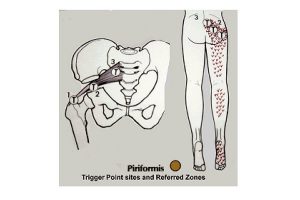Colorado Center for Physical Therapy
Serving South Metro-Denver Since 1990
Neuromuscular Therapy – NMT (St. John Method)
 Neuromuscular Therapy or NMT (St. John Method) is a specific hands-on approach to resolving soft tissue pain in the human body. The St. John Method embodies a wide variety of effective therapeutic techniques and applications that work toward restoring homeostasis (balance) between the muscular and nervous systems.
Neuromuscular Therapy or NMT (St. John Method) is a specific hands-on approach to resolving soft tissue pain in the human body. The St. John Method embodies a wide variety of effective therapeutic techniques and applications that work toward restoring homeostasis (balance) between the muscular and nervous systems.
Owners Erma and James Pacheco have served as core St. John Neuromuscular Therapy instructors, and have presented this work throughout the United States and in Canada. They maintain a staff of highly trained St. John NMT therapists and physical therapists that are eager to help you resolve injury or pain concerns.
On (or prior) to the first visit, the patient will be asked to fill out a health history form. Then, the therapist will evaluate posture, gait, strength, and range of motion. A hands-on evaluation will then follow. During the hands on evaluation, the therapist will very specifically examine the involved soft tissues (muscles ligaments, tendons, fascia, etc.) to gauge their overall health and relationship to the pain condition. These findings are then documented and formulated into the best plan for treatment.
Click on arrows to view slide show
Therapeutic Applications of the St. John Method Include:
Ischemic Compression – Ischemia in simple terms refers to a lack of blood flow to an area of the body. Ischemia leads to pain, poor movement and postural problems. Ischemic compression is a hands-on pressure therapy designed to restore circulation, reduce muscular tension, and promote healing.
Trigger Point Therapy (Travell and Simons based) – Similar to ischemic compression however it also alleviates localized and remote (referred) sensations such as:
- Aches and pains

- Nerve sensations such as pins and needles or numbness and tingling.
- Thermal sensations such as burning
Trigger points can develop in ischemic areas of soft tissues such as muscles, tendons, or ligaments. When a trigger point becomes stimulated or stressed, it will cause a referred sensation that is usually remote from the trigger site. For example, if a trigger point develops in a neck muscle and becomes active because of injury, poor posture, repetitive motion or stress, it will commonly cause referred sensation into certain areas of the head (headaches) or cause upper back, shoulder, or arm pain. The trigger site can also refer other sensations such as numbness, tingling or burning. Another example involves active trigger points that develop in low back or hip muscles that can cause hip and leg sensations that are very similar to sciatic pain. Trigger point therapy is very useful to help alleviate pain of all kinds.
When it comes to active trigger points, the cause of the person’s pain is often remote from where they sense and feel the pain. At the Colorado Center for Physical Therapy, our therapists are trained to find the root cause of pain and eliminate it.
Transverse Friction – Also known as cross-fiber friction. Transverse friction is a deep tissue massage therapy technique describing how a therapist will apply thumb or finger pressure to a muscle, ligament or tendon. The therapist will then glide the thumb in a transverse direction (across the muscle fibers) several times in an effort to break up fibrous adhesions and restore circulation to the area. This is a very useful technique that helps to heal and restore normal function in chronic conditions.
Muscle Energy Techniques (MET) – Therapist assisted techniques that help to lengthen soft tissues or re-position a joint. For example, the therapist may first have a person contract a muscle or muscle group against the therapists resistance, then assist the person in stretching the same muscles. This sequence will be repeated until the desired length of the muscle or muscle group is reached.
Hydrotherapy (applications of heat or cold) – depending on the level of inflammation or nature of the problem, your therapist will determine if a heat or cold based applications are appropriate for you. Cold applications are applied when the problem is acute (within the first 72 hours of injury). A combination of heat and cold (contrast therapy) will sometimes be applied during the sub-acute stage (after 72 hours). A heating approach is generally useful in chronic pain conditions (if the pain persists beyond 2 months). Heat is also applied after deep tissue massage therapy to promote relaxation and decrease the possibility of soreness.
Pelvic Stabilization – Because the body’s center of gravity is located at the pelvic level, it is very important that a person is able to hold proper pelvic position. If there is a pelvic rotation, it will cause unwanted postural changes and dysfunctional movement patterns that ultimately lead to pain. Trauma will also cause pelvic distortions and de-stabilize the center of gravity. Our therapists are trained to recognize pelvic rotations and distortions and know how to restore balance to this area of the body. This will assist other areas of the body to heal.
We accept most insurance and are Medicare providers. Contact us and we will help you determine if your insurance company will cover our services or explore other competitive cash based packages and options.










